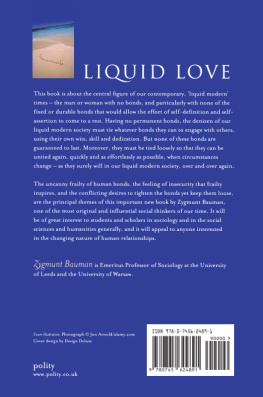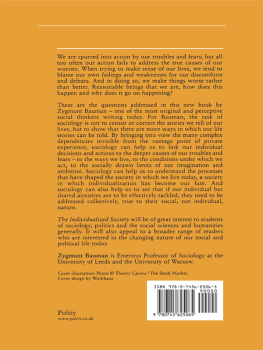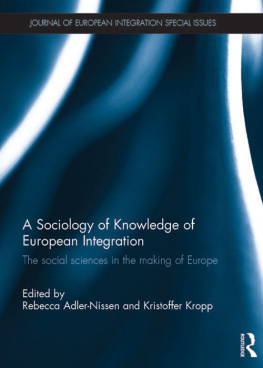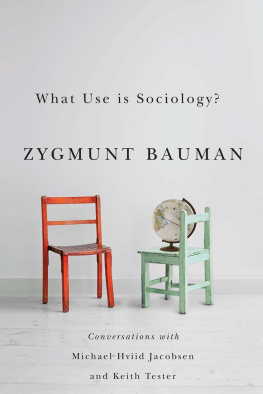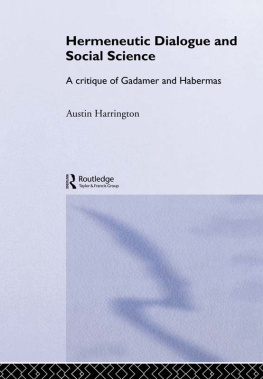Hutchinson & Co (Publishers) Ltd
3 Fitzroy Square, London WIP 6JD
London Sydney Melbourne Auckland
Wellington Johannesburg and agencies
throughout the world
First published 1978
This edition published in the Taylor & Francis e-Library, 2010.
To purchase your own copy of this or any of Taylor & Francis or Routledges collection of thousands of eBooks please go to www.eBookstore.tandf.co.uk.
Zygmunt Bauman 1978
The paperback edition of this book is sold
subject to the condition that it shall not, by
way of trade or otherwise, be circulated without the
publishers prior consent in any form of binding
or cover other than that in which it is published
and without a similar condition including this
condition being imposed on the subsequent purchaser
ISBN 0-203-84946-9 Master e-book ISBN
ISBN 0 09 132530 7 cased
0 09 132531 5 paper
Introduction: the challenge of hermeneutics
This book is concerned with the various responses of social science to the challenge of hermeneutics.
Hermeneutics (from the Greek hermneutiks, related to explaining; explaining is used here in the sense of clarifying, of rendering the obscure plain, the unclear clear) was for many centuries a sub-discipline of philology. Since most of the texts considered essential in the Christian world were available in contradictory versions, bearing traces of sloppiness and absent-mindedness in an endless chain of anonymous copyists, the question of authenticity, of the true version versus distorted onescould not but turn into a major concern of scholars. Hermeneutics was originally developed to answer this question. Employing mostly philological methods, hermeneutics occupied itself with critical scrutiny of contending texts, with the re-possession of the authentic versionthe true meaning of the documentas its ultimate objective. At that stage, recovering the true meaning was seen as identical with demonstrating the authenticity of the text. For obvious reasons, historiography was the most keen and grateful client of hermeneutics.
It was in the sixteenth century that hermeneutics emerged from relative obscurity and swiftly moved into the very centre of scholarly argument. It owed its sudden eminence to the Catholic-Protestant debate regarding the authentic text of the Bible and what was understood as essentially the same problem, the true meaning of its message. The practical urgency of the matter, which had acquired much more than merely technical significance, propelled hermeneutics into a central position in the humanities. Philological critique attracted the most brilliant and creative historians and philosophers. Its prestige was boosted by an impressive series of unquestionable accomplishments (going back to Lorenzo Valla) in exposing the falsity of documents whose authenticity had not been doubted for centuries. Hermeneutics raised the critique of historical sources to the rank of methodical scholarship. In this capacity it became, and remained even when its initial motives lost much of their urgency, an indispensable branch of historiography. For different, but obvious reasons, its technical refinement has been also prompted by the jurists concern with their interpretation of law.
It was not in this capacity, however, that hermeneutics became a challenge to the social sciences in general, sociology in particular. As long as the task of clarifying which hermeneutics set for itself was seen as, above all, a search for the original, undistorted message of written sources, hermeneutics was rightly viewed simply as a tool, however powerful and indispensable. A tool helps to solve problems; it does not create them. By the end of the eighteenth century, however, a fateful shift took place. The philosophical reflection on the activity and results of hermeneutics moved beyond the mere critique of texts and began to ask difficult questions about the nature and the objectives of historical knowledge as such; indeed, of social knowledge in general.
Slowly, and at the beginning imperceptibly, the sense ascribed to the meaning sought by hermeneutical inquiry began to change. The texts dealt with by early hermeneutics were more often than not anonymous; even if the name of an author had been attached to them, they acquired enough weight of their own through the centuries to render them largely autonomous from their creators. The available knowledge of the lives of the genuine or putative authors was on the whole still less reliable than the extant texts themselves; it could hardly contribute to their clarification. An almost total concentration on the text itself, as the only guide to its meaning, was the most obvious response. Philology, rather than psychology, was the obvious framework for the quest for authenticity.
Perhaps more important still was the essential harmony of the task so defined with the cognitive predisposition of the era. The perception of the author as the legitimate owner of his ideas was only beginning to capture the imagination. Artists were still regarded as craftsmen guided by the anonymous rules of the guild rather than by thoroughly individual and private feelings and visions. The middle of the eighteenth century saw a genuine revival of classical aestheticswith its emphasis on the work of art itself, its form and structure, its harmony, its inherent logicand utter lack of interest in authors intentions. To Winckelmann, by far the most influential theorist of the time, beautythis innermost meaning of the work of artwas a matter of the inner proportions of the artistic product; the product could communicate no information beside that contained in its finished form. This aesthetics had no room for the personality of the author; it considered bad any art which bore too visible an imprint of its authors individuality. Winckelmanns theory of art, and indeed the enlightened opinion of his time, saw eye to eye with the credulous and over-confident pre-Kantian view of knowledge in generalas a skilful, but essentially unproblematic reflection of the world as it is.
Kants discovery of the crucial role of the subject in the process of all cognition (which itself came in the wake of the socio-political establishment of the individual as the sole lawful owner of everything pertaining to his social identity) was soon followed by the discovery of the artist behind every work of art, a thinking and feeling personality behind each creation. To find the meaning of a work of art, wrote W.H.Wackenroder in 1797, one has to contemplate the artist rather than his products, to the point of embracing all his characteristic individuality. Not much later, Novalis spoke confidently of the inner universe of the artist whose representation of the work of art is. In the words of Shelley, the artist turns into the legislator of the world. With personal freedom fast becoming the inviolable canon of the new aesthetics (as, indeed, of the dominant world-view of the new era), there was little point in searching for meaning in the text while neglecting the author. With authors re-possessing their texts, readers were denied the authority of their judgement.


